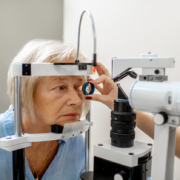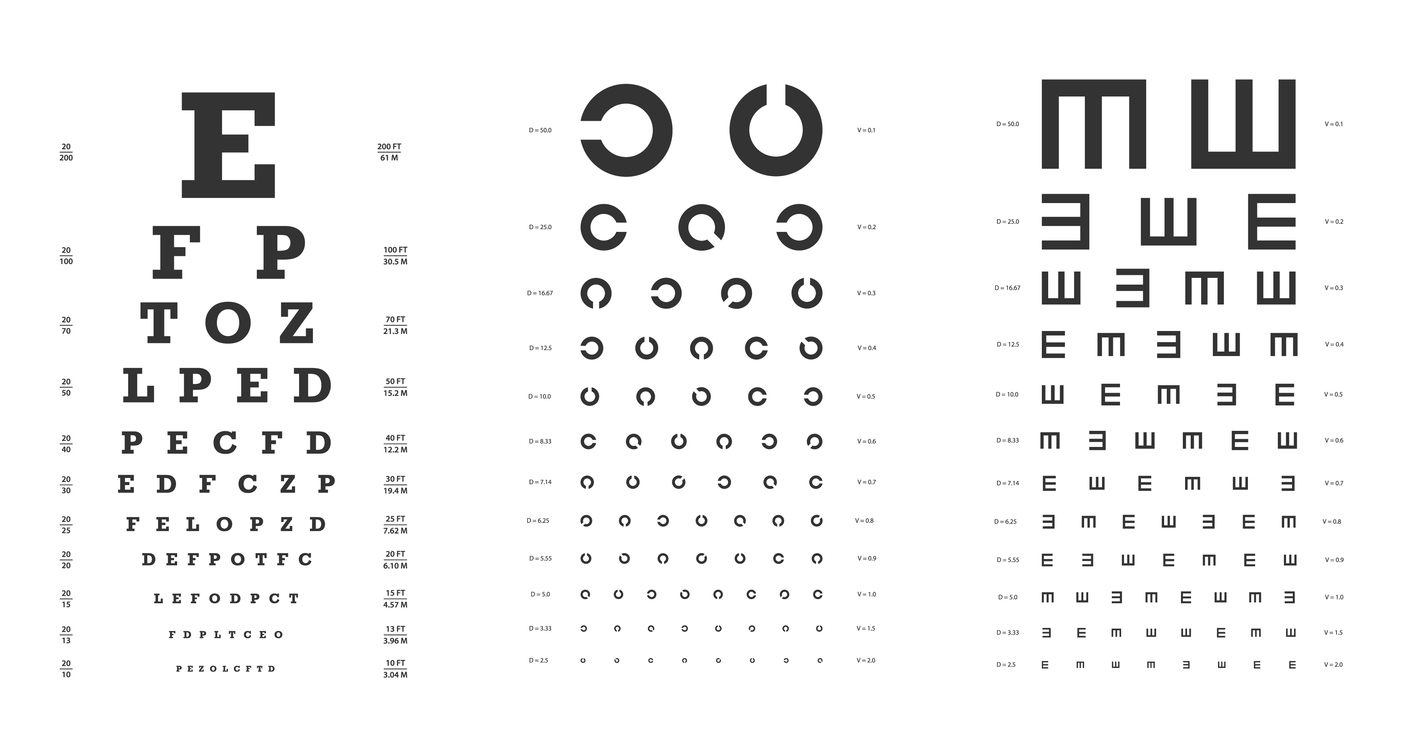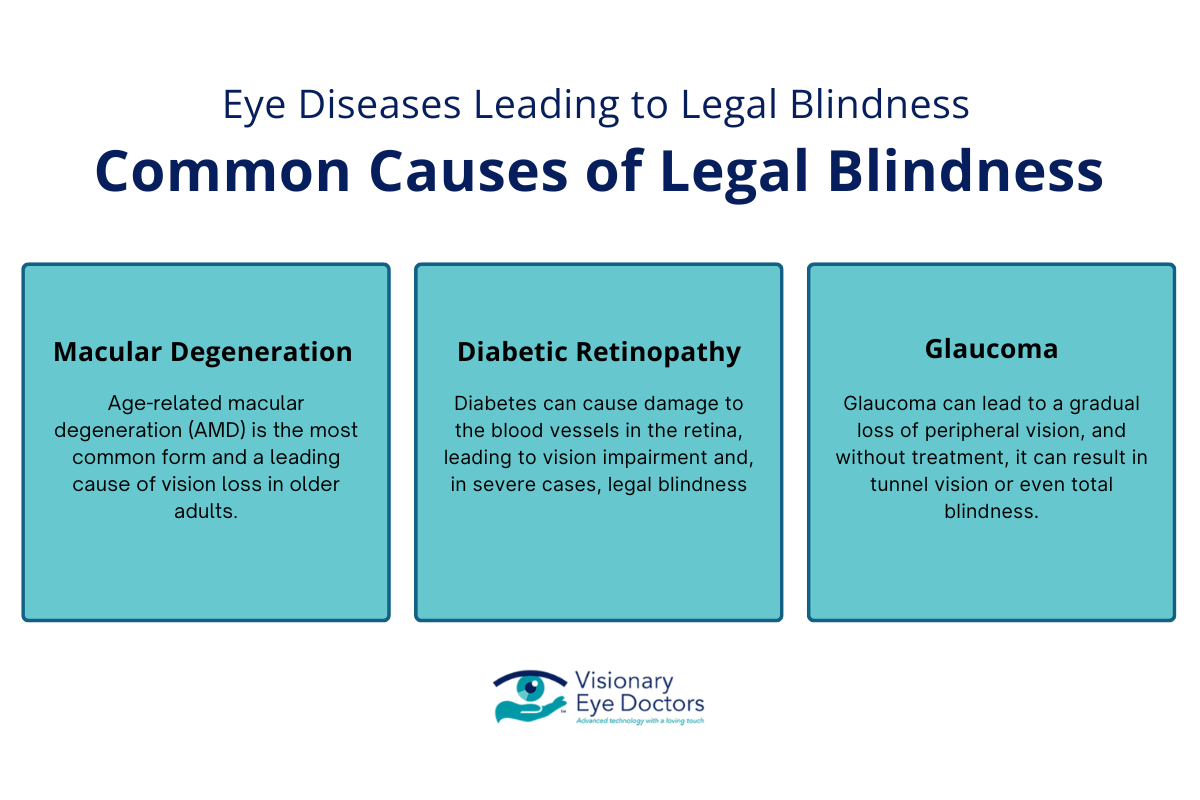Uncovering the First Sign of Glaucoma: What You Need to Know
The first sign of glaucoma is often the loss of peripheral vision. This symptom can be so gradual that it goes unnoticed until significant vision loss has occurred. Early detection through regular eye exams is crucial in preventing further damage and managing the condition effectively.
Glaucoma is an eye disease that damages the optic nerve, typically due to increased intraocular pressure (IOP) from fluid buildup in the front part of the eye. This pressure damages the optic nerve, leading to vision loss if untreated. Glaucoma is often painless and progresses slowly, making early detection vital to prevent permanent vision loss.
Early detection of glaucoma can make a significant difference in the outcome of the disease. Regular eye exams are essential for catching glaucoma in its early stages before noticeable symptoms arise. By identifying and managing glaucoma early, individuals can preserve their vision and prevent irreversible vision loss.
Understanding Glaucoma
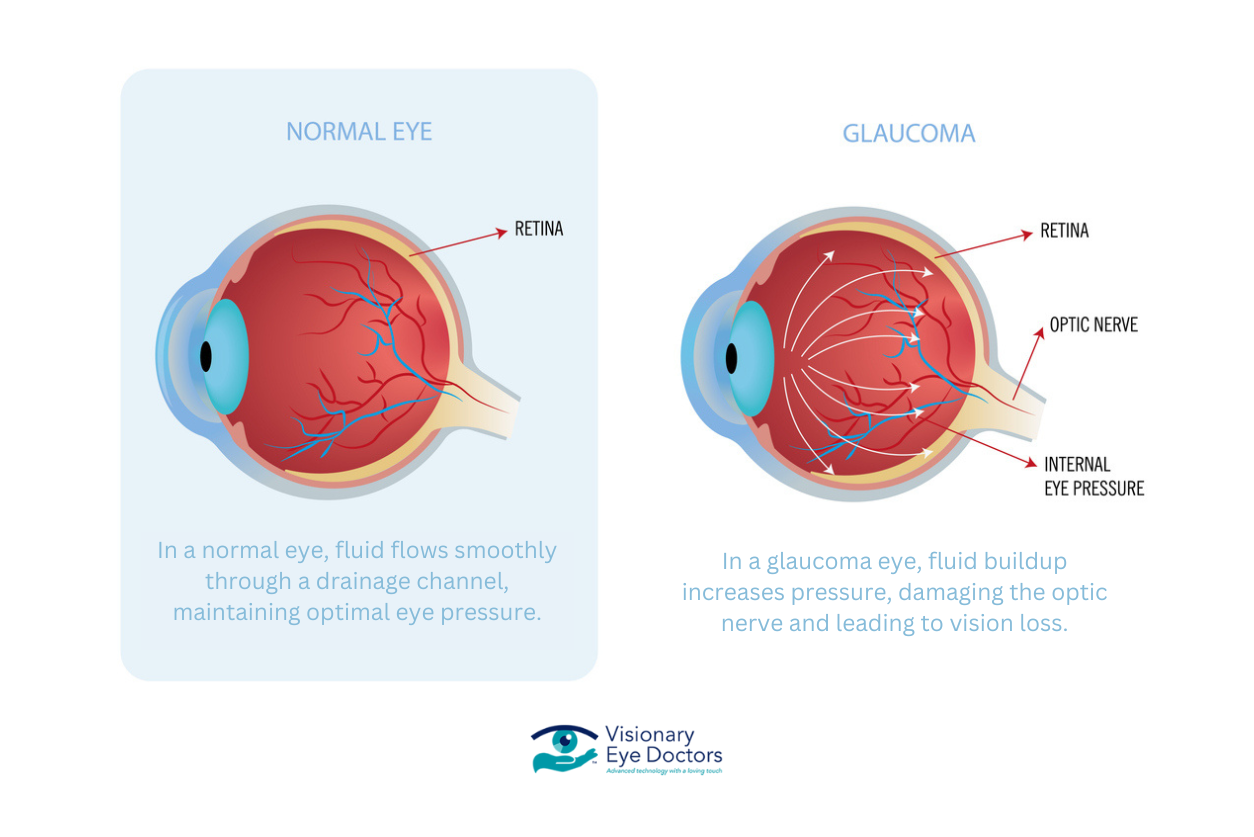
Glaucoma is a group of eye diseases that damage the optic nerve, crucial for good vision. This damage is often caused by abnormally high pressure in your eye. Glaucoma is one of the leading causes of blindness for people over the age of 60. However, blindness from glaucoma can often be prevented with early treatment.
Types of Glaucoma
There are several types of glaucoma, each with its characteristics and treatment approaches:
- Open-Angle Glaucoma: The most common form, where the eye’s drainage canals become clogged over time. This causes increased eye pressure and subsequent optic nerve damage. It develops slowly and is often painless, which makes regular eye exams crucial for early detection.
- Angle-Closure Glaucoma: This type is less common but can occur suddenly and is considered a medical emergency. It happens when the drainage angle between the iris and cornea becomes blocked, leading to a rapid increase in eye pressure. Symptoms include severe eye pain, nausea, and blurred vision.
- Normal Tension Glaucoma: Even with normal eye pressure, optic nerve damage can occur. The exact cause is unknown, but it may be due to a sensitive optic nerve or reduced blood flow to the optic nerve.
- Secondary Glaucoma: This can occur as a complication of other medical conditions, such as diabetes or cataracts. It can also result from eye injuries, inflammation, or prolonged use of steroids.
- Congenital Glaucoma: A rare condition present at birth, caused by incorrect or incomplete development of the eye’s drainage canals during prenatal development. It often runs in families and is typically diagnosed in infancy or early childhood.
- Pigmentary Glaucoma: A form of secondary open-angle glaucoma that occurs when pigment granules from the iris accumulate in the drainage channels, blocking fluid outflow and increasing eye pressure.
How Glaucoma Affects Vision
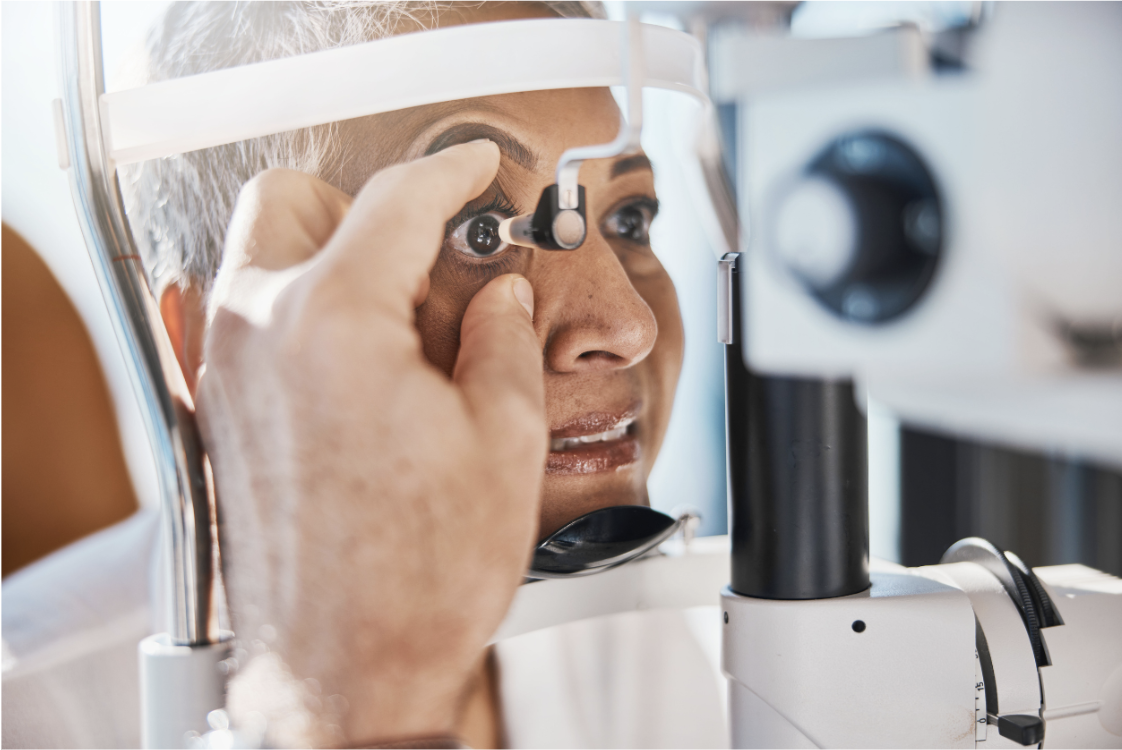
Glaucoma primarily affects peripheral vision first, gradually leading to tunnel vision if untreated. In the early stages, there may be no noticeable symptoms, which is why glaucoma is often called the “silent thief of sight.” As the disease progresses, individuals may notice blind spots in their field of vision, which can eventually affect central vision.
Understanding the nature of glaucoma, its types, and how it impacts vision reinforces the importance of early detection and regular eye exams. The next sections will focus on recognizing the early signs and symptoms, identifying risk factors, and exploring treatment options to manage glaucoma effectively.
Recognizing the Early Signs and Symptoms
The most common early sign of glaucoma is the gradual loss of peripheral vision. This loss is often so subtle that it can go unnoticed until significant damage has occurred. People might find it difficult to see objects on the sides while focusing straight ahead, which can affect activities like driving or reading.
Other early symptoms include:
- Blurry Vision: Vision may become hazy or blurry, especially in the early morning or after waking up.
- Blind Spots: Small blind spots can develop in the peripheral or central vision, which might go unnoticed initially.
- Halos Around Lights: Seeing halos or colored rings around lights, particularly in dim lighting.
Symptoms in Different Types of Glaucoma
- Open-Angle Glaucoma: Often has no noticeable symptoms in its early stages. Vision loss occurs gradually, starting with peripheral vision.
- Angle-Closure Glaucoma: Symptoms can be sudden and severe, including eye pain, headache, nausea, vomiting, and blurred vision. This is a medical emergency and requires immediate attention.
- Normal Tension Glaucoma: Similar to open-angle glaucoma, with gradual vision loss despite normal intraocular pressure.
- Secondary Glaucoma: Symptoms vary depending on the underlying cause but can include eye pain, redness, and vision changes.
- Congenital Glaucoma: In infants, symptoms can include excessive tearing, light sensitivity, and a cloudy appearance of the cornea.
The Importance of Regular Eye Exams
Regular eye exams are crucial for early detection of glaucoma. A comprehensive eye exam can identify the disease before noticeable symptoms develop. Eye exams typically include:
- Measuring Eye Pressure: Elevated eye pressure is a significant risk factor for glaucoma.
- Visual Field Test: To check for peripheral vision loss.
- Dilated Eye Exam: Allows the eye doctor to examine the optic nerve for signs of damage.
- Optical Coherence Tomography (OCT): Provides detailed images of the optic nerve and retina, helping to detect early signs of glaucoma.
Comprehensive Eye Exam
A comprehensive eye exam involves several tests to accurately diagnose glaucoma. These include:
- Tonometry: Measures the pressure inside the eye (intraocular pressure).
- Pachymetry: Measures the thickness of the cornea, which can affect eye pressure readings.
- Gonioscopy: Examines the drainage angle in the eye to determine whether it is open or closed.
- Visual Field Test: Assesses peripheral vision to detect blind spots.
- By recognizing the early signs and symptoms of glaucoma and understanding the importance of regular eye exams, individuals can take proactive steps to protect their vision. The next sections will discuss the risk factors and prevention measures, as well as the treatment options available to manage glaucoma effectively.
Risk Factors and Prevention
Understanding the risk factors for glaucoma can help in early detection and prevention. Several factors increase the likelihood of developing glaucoma, including:
- Age: The risk of glaucoma increases with age, particularly after age 40.
- Family History: Individuals with a family history of glaucoma are at a higher risk.
- Race: African Americans are more likely to develop glaucoma, especially at a younger age, and are at a higher risk of vision loss from the disease.
- Medical Conditions: Conditions such as diabetes, high blood pressure, and heart disease can increase the risk of glaucoma.
- Eye Conditions: Severe nearsightedness, previous eye injuries, or other eye conditions can elevate the risk.
- Prolonged Use of Steroids: Long-term use of steroid medications, whether oral, topical, or inhaled, can increase eye pressure and the risk of developing glaucoma.
Preventative Measures
Preventative measures can significantly reduce the risk of developing glaucoma or slow its progression. These include:
- Regular Eye Exams: Regular, comprehensive eye exams are crucial for early detection of glaucoma, particularly for those in high-risk groups.
- Healthy Lifestyle Choices: Maintaining a healthy diet, regular exercise, and avoiding smoking can help reduce the risk of glaucoma and other eye conditions.
- Protective Eyewear: Wearing protective eyewear during sports or activities that could cause eye injury can help prevent traumatic glaucoma.
- Manage Health Conditions: Keeping chronic conditions like diabetes and high blood pressure under control can reduce the risk of developing glaucoma.
By understanding who is at risk for glaucoma and taking preventive measures, individuals can protect their vision and potentially reduce the impact of this eye disease. The next section will explore the treatment and management options available for those diagnosed with glaucoma.
Treatment and Management Options
Early diagnosis of glaucoma is crucial to prevent permanent vision loss. At Visionary Eye Doctors, we offer a range of advanced treatment options tailored to each patient’s needs. Our specialists, Dr. Reena A. Garg, M.D. and Dr. Georgina Medina, M.D., are experienced in managing glaucoma through personalized care plans that may include eye drops, laser treatments, and surgical procedures.
Trust Visionary Eye Doctors to provide the highest quality care for glaucoma. Early detection and effective treatment can make a significant difference in preserving your vision. Take the next step and schedule an appointment or consultation with our experts today.

